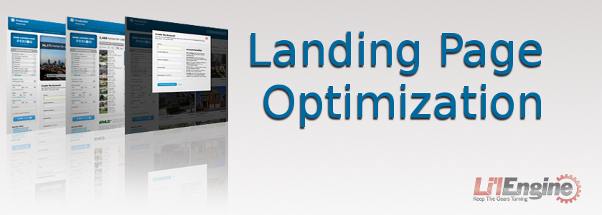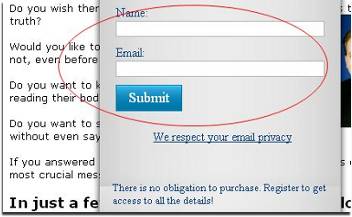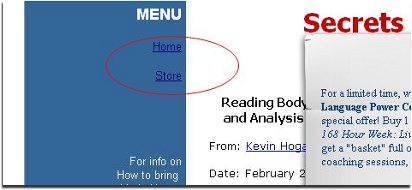Landing Page Optimization

A landing page is the page that comes up when a potential customer clicks on an advertisement or on a search engine result. The landing page displays content that naturally follows that of the advertisement or the link. It is organized around a few keywords or phrases for search engine indexing purposes. In a pay per (PPC) click campaign the landing is customize to measure how effective different advertisements are so that customers can be more accurately targeted in the future.
Landing page optimization, or LPO is a part of the overall marketing process called conversion rate optimization. The goal of conversion rate optimization is to improve the percentage of visitors that become actual customers and sales leads. There are a number of ways of approaching LPO, some based on targeting, and others based on experimentation:
- Open-ended experimentation
- Closed-ended experimentation
- Consumer directed targeting
- Predictive content targeting
- Associative content targeting
Open-ended experimentation shows consumers several variations of a landing page and their behavior is then observed. With open-ended experimentation, the landing page is changed dynamically as the results of the experiment change.
Closed-ended experimentation involves the same process as open-ended experimentation, except the consumers’ behavior is monitored. When the experiment is over, an optimal landing page is chosen based on the consumers’ behavior and preferences.
Consumer directed targeting is sometimes known as social targeting. Page content is created based on publicly available information based upon ratings, referrals, reviews, and tagging.
Predictive content targeting is a type of targeting where the page content is changed based on correlating known information about the potential customer (prior purchases and demographics, as examples) in order to anticipate future actions based on predictive analytics.
Associative content targeting is also known as rule-based optimization, or passive targeting. Page content with associative content targeting is modified base upon information gleaned from the visitors search criteria, geographic location, source traffic, or ther generic factors that can be used for non-research-based segmentation of the consumer market.
LPO testing actually goes far beyond this, but it is clear that webmasters put a lot of time and effort into getting their landing page right. While the specifics of a landing page will change based on the industry and the product being offered, there are a few general tips that everyone should keep in mind when it comes to optimizing their site’s landing page.
 1. Get the registration form right. First of all, know what kind of registration form works best with your particular landing page clientele. The conventional wisdom is that you lose up to one-third of your respondents for each registration field. Whether this is true or not, it is certain that seeing a lot of registration fields is a turn-off to most people, so be sure you’re actually using whatever information you plan to squeeze out of your respondents. Some webmasters think that just getting the email address is best to maximize the number of possible leads, while others think that it’s good to gather a few basic fields of data – enough to be able to separate your A leads from B leads, for example.
1. Get the registration form right. First of all, know what kind of registration form works best with your particular landing page clientele. The conventional wisdom is that you lose up to one-third of your respondents for each registration field. Whether this is true or not, it is certain that seeing a lot of registration fields is a turn-off to most people, so be sure you’re actually using whatever information you plan to squeeze out of your respondents. Some webmasters think that just getting the email address is best to maximize the number of possible leads, while others think that it’s good to gather a few basic fields of data – enough to be able to separate your A leads from B leads, for example.
Put yourself in your landing page user’s shoes. What would he or she think would be sufficient information for you to have from them? Maybe their job title, company, phone number, and potential time frame of purchase would be appropriate, but go much beyond this, and people won’t bother at all. In the first screen shot you can see an example of a very simple registration. While it does appear as a “separate” page covering part of the real landing page, it is simple and it doesn’t float around, following me as I scroll down the page, so it’s pretty reasonable.
2. Don’t overdo the special effects and “wow” graphics of your landing page. Some landing pages make you feel like you’ve landed in the midst of a circus. People don’t have a lot of patience, so it’s better to keep it focused and simple. If your landing page contains a lot of text – and most do – then at least break it up with plenty of subheadings, bullet points and white space. And while you’re at it, offer numerous calls to action. Some people like to click on a call to action button at the top of the page, some will be convinced part of the way through, and others will read through to the last word before responding. Cater to all these people by sprinkling call to action buttons intermittently throughout your landing page. If you’re able, custom tag each link so you can see which ones are used the most. This will help you when it’s time to update your landing page.
3. Make it clear that the customer is in the right place. All it takes is a statement at the top welcoming new subscribers. Users take a little bit of a leap of faith when they click on an ad. It’s nice to know you’ve landed on an actual landing page rather than gone down some virus-laden internet rabbit hole. This leads naturally to the next tip.
4. Don’t do stuff that makes them think their computer has been taken over. Sure, special effects might wow gamers, but a landing page for an e-book on fly-tying doesn’t need the latest special effects. If a landing page is too whiz-bang, visitors may be frustrated close the browser and they’ll never come back.
 5. Don’t make it too easy for users to escape, however. You may think it’s nice to offer visitors buttons to click for extra information, or to make your landing page fit in better with your other pages (see second screen shot). While it’s OK for your landing page to have some similarities to the rest of your site, you should keep it focused. Your landing page should stand alone, and it’s sole job should be to funnel your visitors to the call to action. The one exception to this should be to offer a link to your privacy policy, but you should put your call to action button there as well.
5. Don’t make it too easy for users to escape, however. You may think it’s nice to offer visitors buttons to click for extra information, or to make your landing page fit in better with your other pages (see second screen shot). While it’s OK for your landing page to have some similarities to the rest of your site, you should keep it focused. Your landing page should stand alone, and it’s sole job should be to funnel your visitors to the call to action. The one exception to this should be to offer a link to your privacy policy, but you should put your call to action button there as well.







